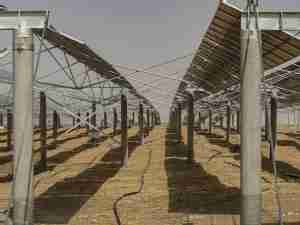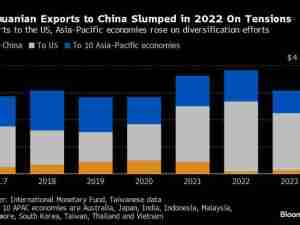Russian stocks and the ruble rebounded from steep losses as traders speculated about the possible limits of sanctions.
The currency was one of the biggest gainers among emerging markets on Tuesday after a rout the day before. State lenders VTB Bank PJSC and Sberbank PJSC rallied after they weren’t mentioned in proposed sanctions by the European Union and separate U.K. penalties. That helped pull the benchmark stock index back into the green after its worst day since March 2014.
“Commentary from the West suggests that sanctions will not be as severe and broad as initially feared,” said Simon Harvey, head of FX analysis at Monex Europe Ltd.
Markets have been pummeled this week by escalating geopolitical tensions after President Vladimir Putin recognized two separatist republics in eastern Ukraine and ordered troops sent to them.
The question for investors now is how far the U.S. and its allies move on penalties in response to Putin’s decision to recognize the breakaway regions.
So far on Tuesday, Germany halted the certification process for the Nord Stream 2 pipeline, while the U.K. said it will sanction five Russian banks and three high net-worth individuals. The EU has proposed penalties that include targeting Russia’s ability to tap capital and financial markets.
Bond Pain
Russia’s ruble bonds fell amid concern that the EU and U.S. could impose fresh restrictions on government debt. Ten-year yields were up 28 basis points at 10.92% as of 5:50 p.m. in Moscow, taking their four-day increase to almost 130 basis points.
“Even if the prices are good value, that’s no help if we’re not going to be allowed to hold it,” said Paul McNamara, a fund manager at GAM Investments, referring to Russian government bonds.
“A ban on purchases in the primary is in the price. A ban on all buying, not so much. Removal from SWIFT, ending Russian bank correspondent accounts in the West, a ban on secondary buying are not the base case, but all are plausible.”
It’s unclear what the U.S. and its allies would define as an invasion, and what would trigger harsher sanctions. Some European nations have been wary of the economic fallout they could face from penalizing Russia, especially given their reliance on it for gas imports. Russia has repeatedly denied that it plans to invade Ukraine.
Other market highlights:
- The MOEX index rose 1.4% after falling as much as 9.2% earlier; The ruble was up 0.8% at 79.1325 per dollar, paring a depreciation of 1.5%
- The risk premium for Russia’s sovereign dollar bonds jumped 52 basis points to 332, according to a JPMorgan Chase & Co. gauge. That’s the biggest single-day increase since March 2020.
- The cost of insuring Russian debt is trading at its most elevated level since 2016, credit-default swaps show.
- Russian forward-rate agreements have blown out to reflect more than 412 basis points of rate increases in the coming three months.
- The MOEX index’s forward price-to-earnings ratio is now the lowest level since 2009, according to data compiled by Bloomberg.
“For the time being, most of the risks seem to have been priced in,” said Anastasia Levashova, a fund manager at BlackFriars Asset Management. Sanctions “will be limited in scope and will avoid the energy sector. We don’t expect these military tensions and border shelling to evolve into full-scale military conflict,” she said.





